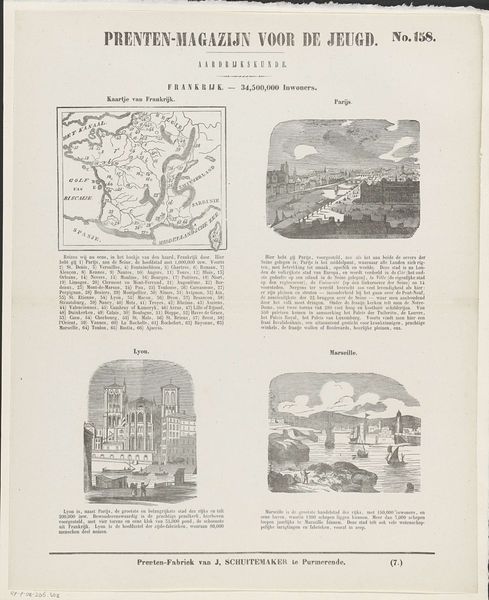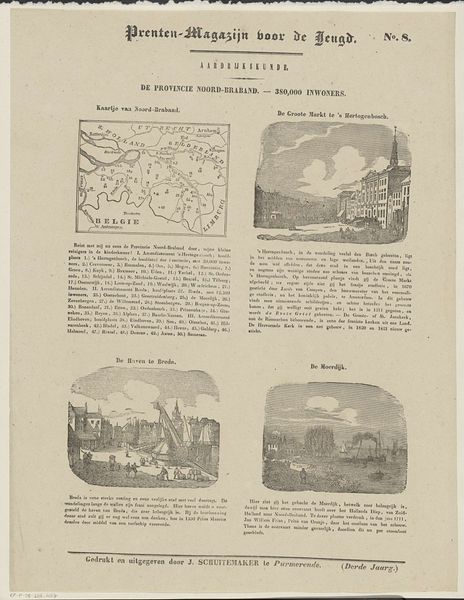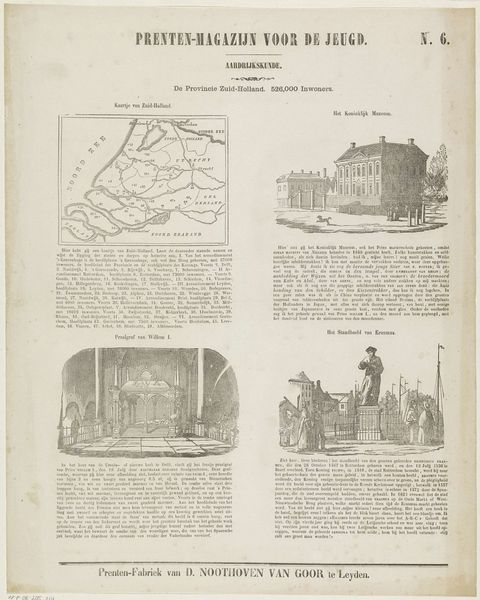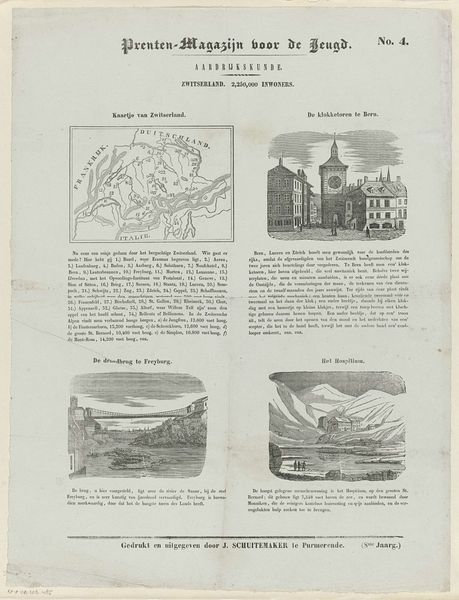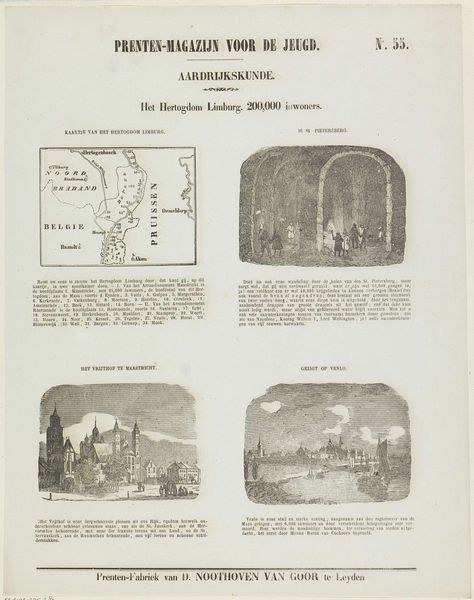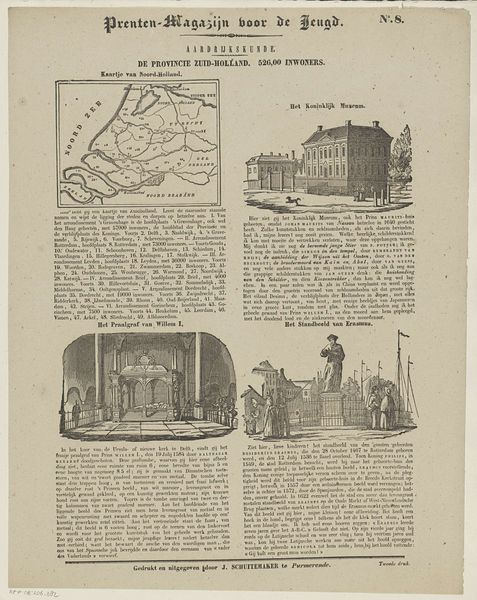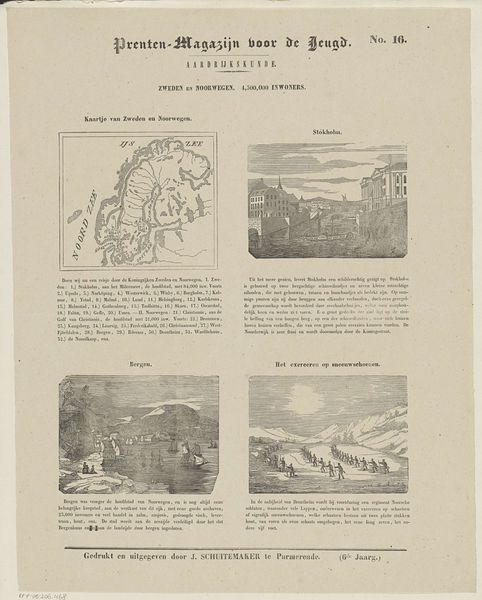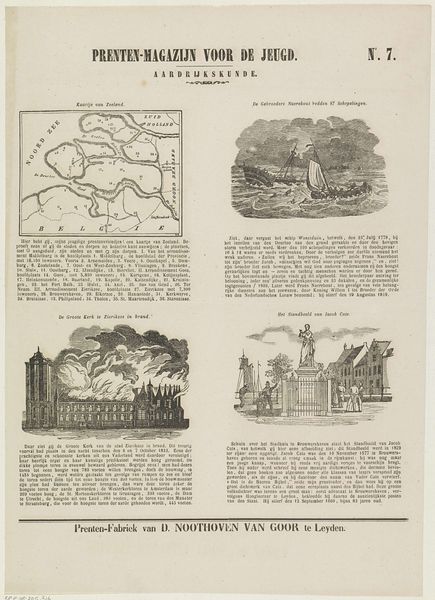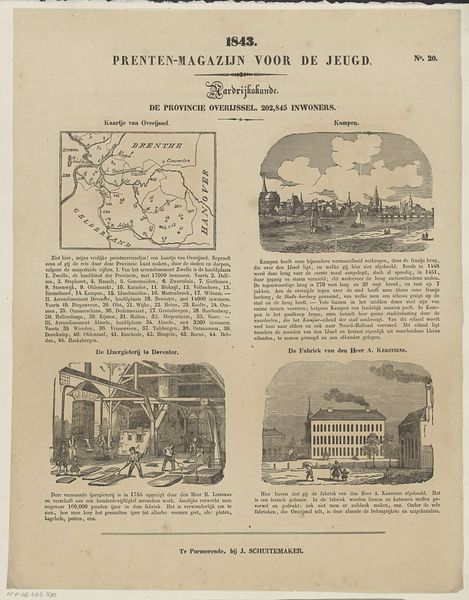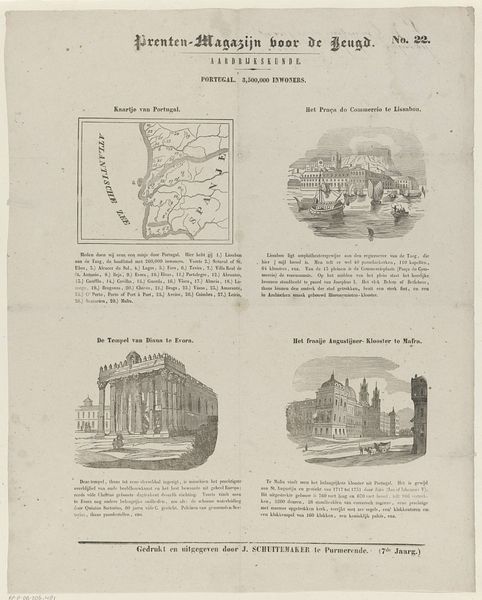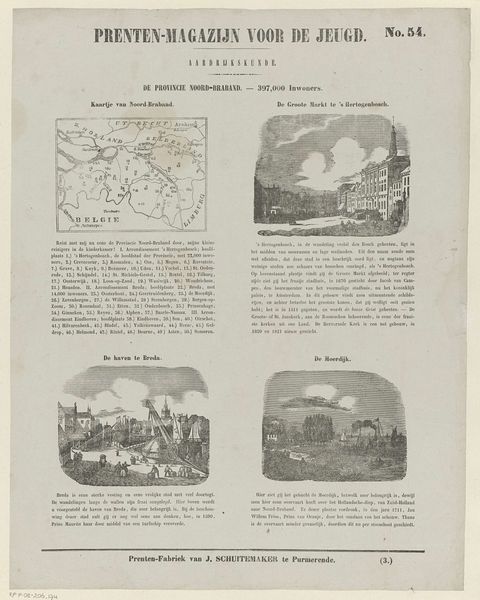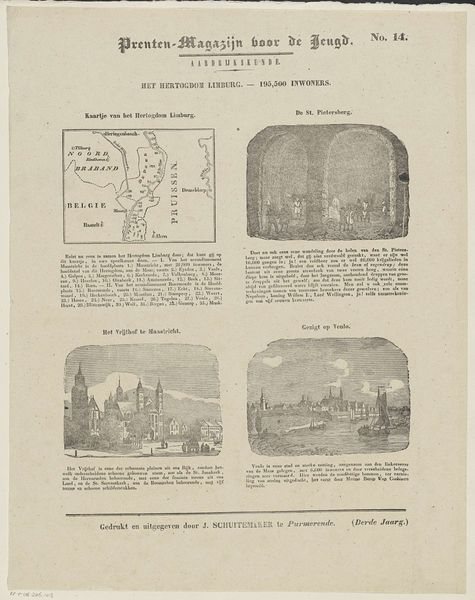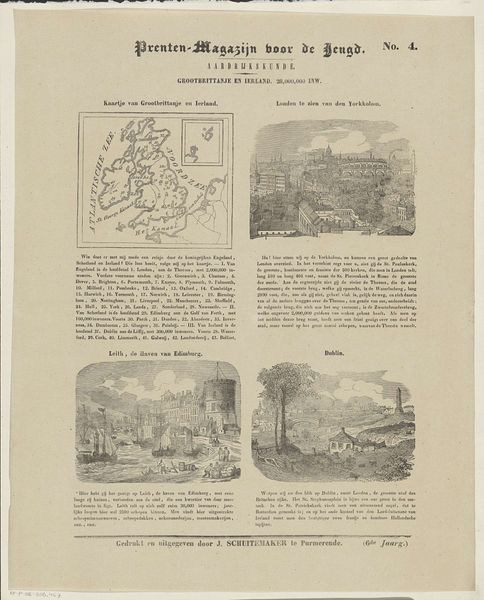
graphic-art, print, engraving
#
graphic-art
#
dutch-golden-age
# print
#
landscape
#
cityscape
#
engraving
Dimensions: height 414 mm, width 336 mm
Copyright: Rijks Museum: Open Domain
Curator: Here we have "De provincie Overijssel. 215,000 inwoners", an engraving by Dirk Noothoven van Goor, dating roughly between 1850 and 1881. It reminds me of an informational broadside. The composition, divided into four distinct scenes, seems almost diagrammatic. What jumps out at you? Editor: The juxtaposition of landscape, map, and industry is interesting. It feels like the piece is trying to say something about progress, perhaps? I’m curious to know what you see in this seemingly straightforward image. Curator: This image screams of its production era. Note how it frames Overijssel: first a geographical space – both map and landscape – then industrious and productive. The printing press itself is essential. These were mass-produced and widely circulated. Notice "Prenten-Fabriek van D. Noothoven van Goor te Leyden” emblazoned at the bottom, almost like a maker's mark, asserting its origin. It draws attention to the means by which this image, and its message, reached the masses. Editor: So you're suggesting the medium – printmaking, the “Prenten-Fabriek" itself - is the message, emphasizing industrial production of the image. It challenges a view of the artwork as some untouchable masterpiece by bringing it into social context. Curator: Exactly. And consider the target audience. “Prenten-Magazijn voor de Jeugd”—prints for youth! These images are not only representing but actively constructing a worldview. What labor practices, and whose consumption habits, does it hope to encourage? Editor: That is an intriguing element to consider. By juxtaposing landscape, geography, industry and youth readership, it seems less about simple education and more about shaping perspectives. Thanks for illuminating all those components! Curator: My pleasure. Examining art through a materialist lens provides essential insight. Now, I see that landscape very differently, not just as geographical location but also as an engine for societal change through production.
Comments
No comments
Be the first to comment and join the conversation on the ultimate creative platform.
